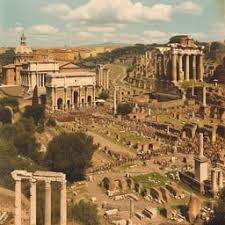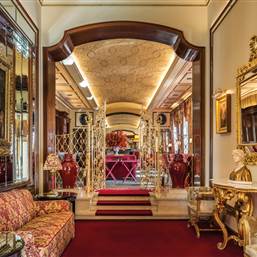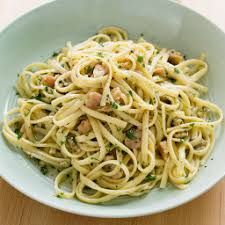Welcome to Rome: The Eternal City
Rome, the Eternal City, is a living museum where ancient history seamlessly blends with modern Italian life. From the iconic Colosseum to the spiritual heart of Vatican City, from authentic pasta carbonara to creamy gelato, Rome offers an unforgettable journey through time and taste. This comprehensive guide will help you explore ancient ruins, savor authentic Roman cuisine, find the perfect accommodation, and navigate the city like a local.
Best Time to Visit Rome
Rome enjoys a Mediterranean climate with hot, dry summers and mild, rainy winters. The best time to visit is during spring (April-June) and autumn (September-October) when temperatures are pleasant, crowds are manageable, and the city is at its most beautiful. Summer offers vibrant energy but intense heat and large crowds. Winter features fewer tourists and lower prices but shorter days and occasional rain.
Rome Weather Overview
| Season | Months | Weather Conditions | Highlights |
|---|---|---|---|
| Spring | March - May | Mild, blooming flowers, occasional rain | Easter celebrations, perfect sightseeing weather |
| Summer | June - August | Hot, dry, crowded, occasional heatwaves | Longer days, summer festivals, vibrant atmosphere |
| Autumn | September - November | Pleasant temperatures, beautiful foliage | Wine harvest season, cultural events, fewer crowds |
| Winter | December - February | Cool, rainy, shortest days, occasional cold snaps | Christmas markets, lower prices, intimate experience |
Ancient Rome: Must-See Historical Sites
Rome's history spans over 2,500 years, leaving behind an incredible wealth of archaeological treasures. Here are the essential ancient sites:
1. The Colosseum
The iconic amphitheater that once hosted gladiator contests and public spectacles. Book skip-the-line tickets in advance to avoid long queues. Consider a guided tour to fully appreciate its history.
2. Roman Forum
The political, commercial, and judicial center of ancient Rome. Walk among the ruins of temples, basilicas, and public spaces where Julius Caesar and other historical figures once walked.
3. Palatine Hill
According to legend, this is where Romulus founded Rome. The hill offers spectacular views of the Forum and Circus Maximus, plus the ruins of imperial palaces.
4. Pantheon
One of the best-preserved ancient Roman buildings, this temple-turned-church features a revolutionary dome with an oculus that illuminates the interior. Free to enter.

The Colosseum - Iconic symbol of ancient Rome

Roman Forum - Heart of ancient Roman public life
Where to Stay in Rome
Rome offers diverse neighborhoods each with unique character. Here are our top hotel recommendations across different areas and budgets:
Luxury Hotels

Hotel Hassler
Located at the top of the Spanish Steps, this legendary hotel offers unparalleled views, luxurious accommodations, and Michelin-starred dining. A favorite of celebrities and dignitaries.
From €600/night
Check Availability
St. Regis Rome
A historic palace hotel with opulent interiors, exceptional service, and a prime location near Termini Station. Features a beautiful spa and elegant dining options.
From €550/night
Check AvailabilityBoutique Hotels

Villa Spalletti
A charming boutique hotel set in a 19th-century villa with beautiful gardens, elegant rooms, and personalized service. Located in the exclusive Parioli district.
From €220/night
Check AvailabilityRoman Cuisine: A Culinary Journey
Roman cuisine is characterized by simple, flavorful dishes using fresh, local ingredients. From classic pasta dishes to succulent meats and irresistible desserts, here's what to try:
Traditional Roman Dishes
Pasta alla Carbonara
The quintessential Roman pasta dish made with eggs, Pecorino Romano cheese, guanciale (cured pork cheek), and black pepper. Creamy without cream!
Where to try: Roscioli, Trattoria Da Danilo
Cacio e Pepe
Deceptively simple yet incredibly flavorful pasta dish with just Pecorino Romano cheese and freshly ground black pepper. A true test of a chef's skill.
Where to try: Felice a Testaccio, Flavio al Velavevodetto
Saltimbocca alla Romana
Thin slices of veal topped with prosciutto and sage, cooked in white wine. The name means "jumps in the mouth" referring to its delicious flavor.
Where to try: Armando al Pantheon, Checchino dal 1887
What to Order
- Antipasti: Start with artichokes Roman-style (carciofi alla romana) or supplì (fried rice balls)
- Primi: Pasta dishes like carbonara, amatriciana, or cacio e pepe
- Secondi: Meat dishes like saltimbocca or abbacchio (roast lamb)
- Dolci: Finish with tiramisu, panna cotta, or the classic tartufo
- Wine: Try local Frascati white or a Cesanese del Piglio red

Authentic Roman pasta - Carbonara, Amatriciana, Cacio e Pepe

Gelato - The perfect sweet treat while exploring Rome
Beyond Ancient Rome: Other Must-See Attractions
While ancient sites are magnificent, Rome offers countless other world-class attractions:
1. Vatican City
Visit St. Peter's Basilica, climb the dome for panoramic views, and explore the Vatican Museums including the Sistine Chapel with Michelangelo's masterpiece.
2. Trevi Fountain
Rome's most famous fountain, a Baroque masterpiece. Toss a coin over your shoulder to ensure your return to Rome. Visit early morning or late evening to avoid crowds.
3. Spanish Steps
Climb the 135 steps from Piazza di Spagna to Trinità dei Monti church. In spring, the steps are adorned with beautiful azalea flowers.
4. Piazza Navona
One of Rome's most beautiful squares, featuring Bernini's Fountain of the Four Rivers, baroque churches, and lively atmosphere with street performers and artists.
Practical Information
Getting Around
Rome's historic center is best explored on foot. For longer distances, use the Metro (limited but efficient), buses, or trams. Purchase a Roma Pass for unlimited public transport and museum discounts. Taxis are available but can be expensive during peak hours.
Money-Saving Tips
- Many churches offer free entry and contain incredible artworks
- Drink water from public nasoni (drinking fountains) instead of buying bottled water
- Enjoy an aperitivo (pre-dinner drink with snacks) for an affordable light meal
- Visit major attractions on the first Sunday of the month for free entry
- Eat away from major tourist sites for better quality and prices
Etiquette Tips
- Dress modestly when visiting churches (cover shoulders and knees)
- Greet shopkeepers with "buongiorno" (good day) or "buonasera" (good evening)
- Italians typically eat late: lunch around 1-2pm, dinner after 8pm
- Stand at the bar for coffee to pay less than sitting at a table
- Tipping is not expected but appreciated for exceptional service
